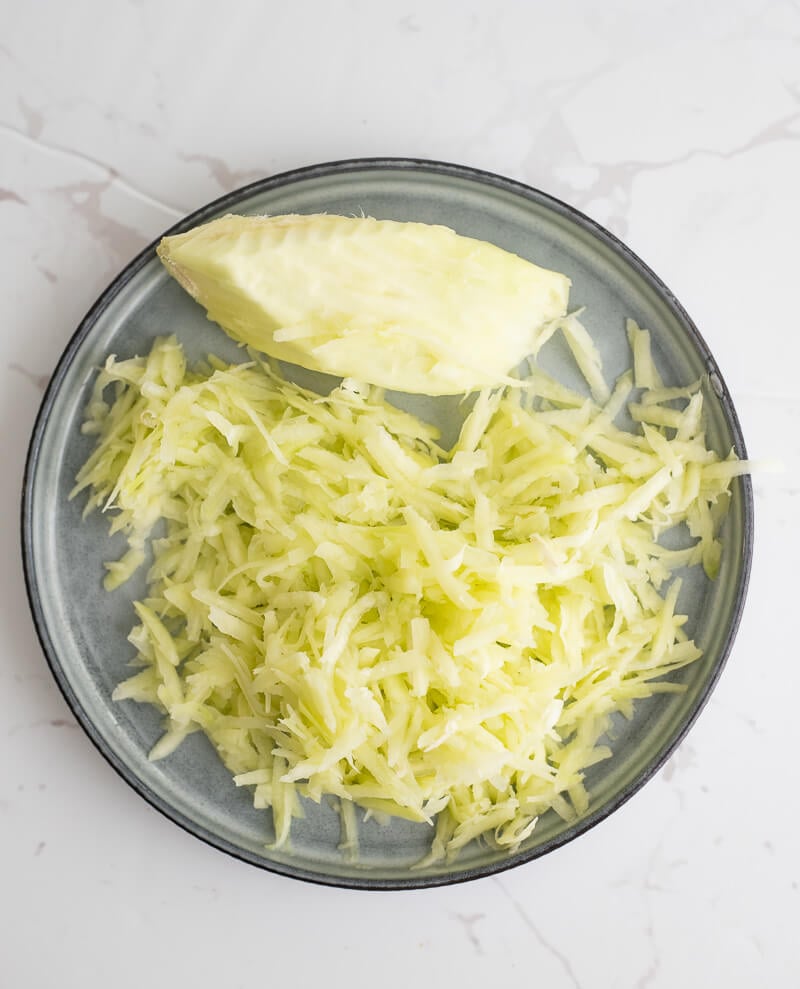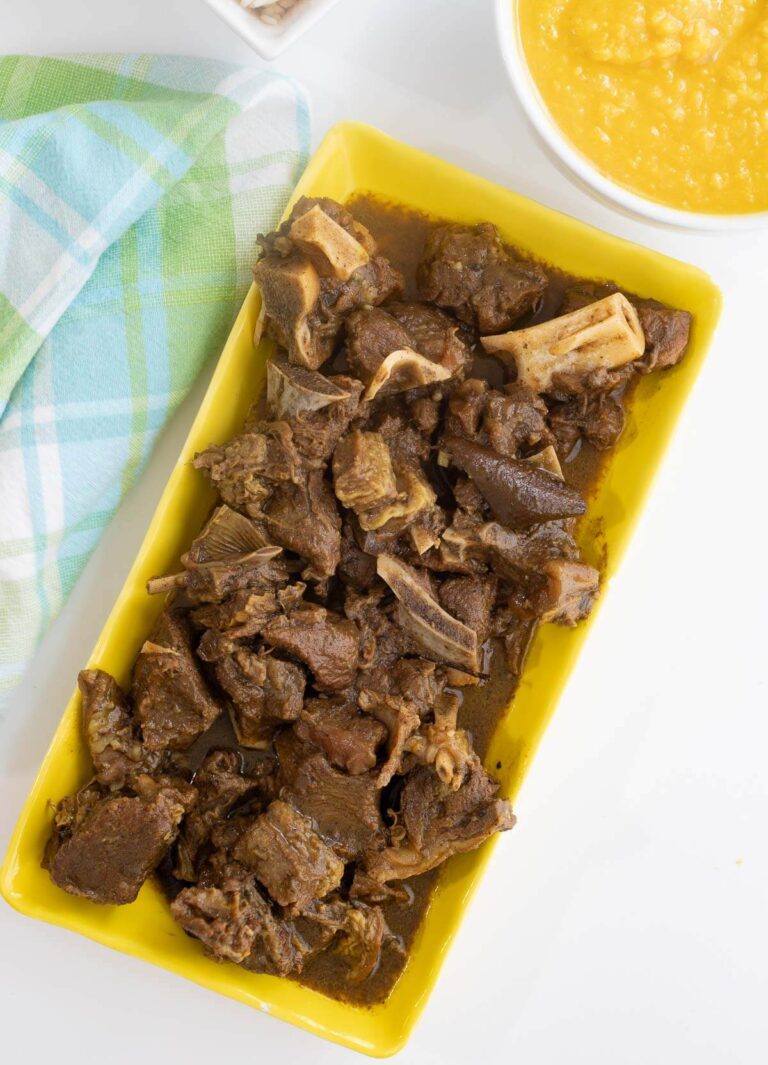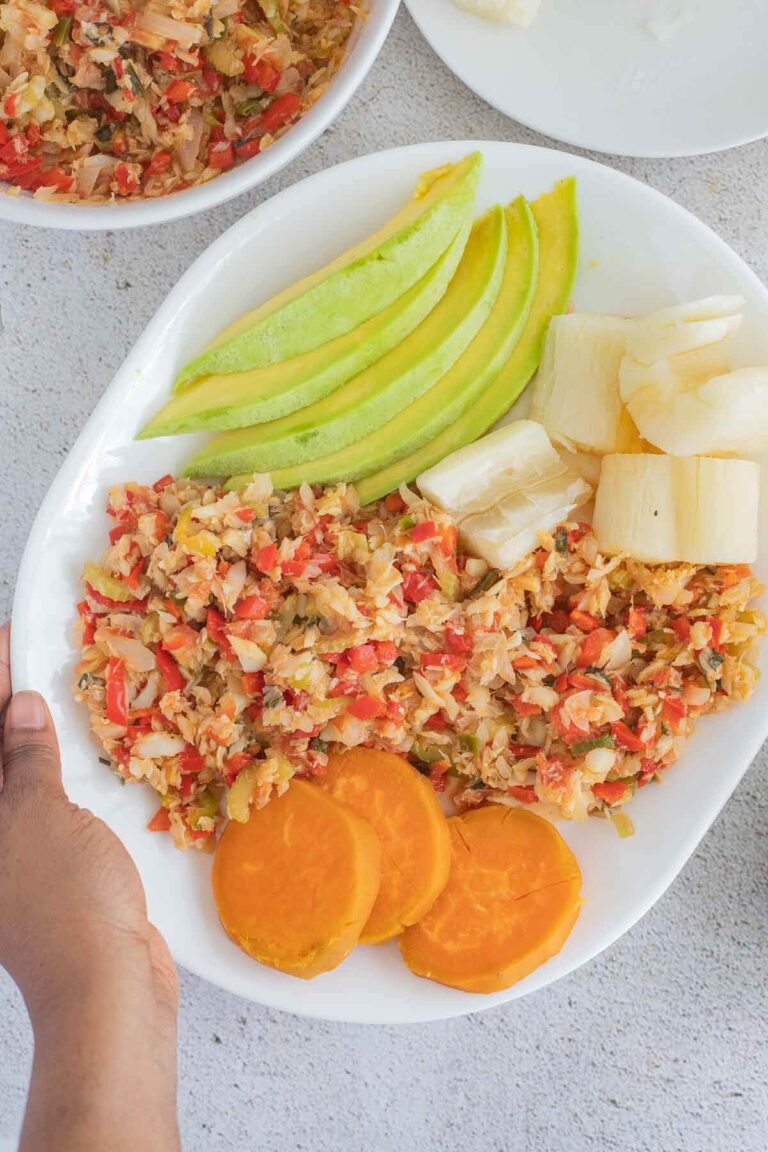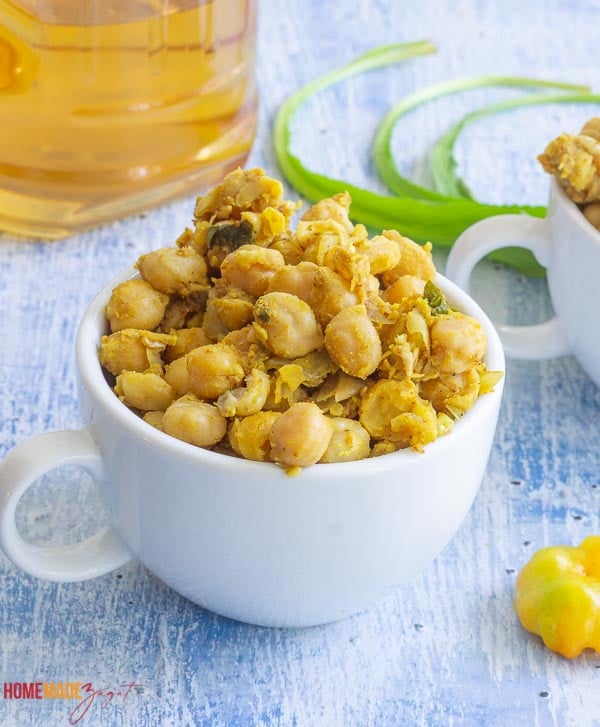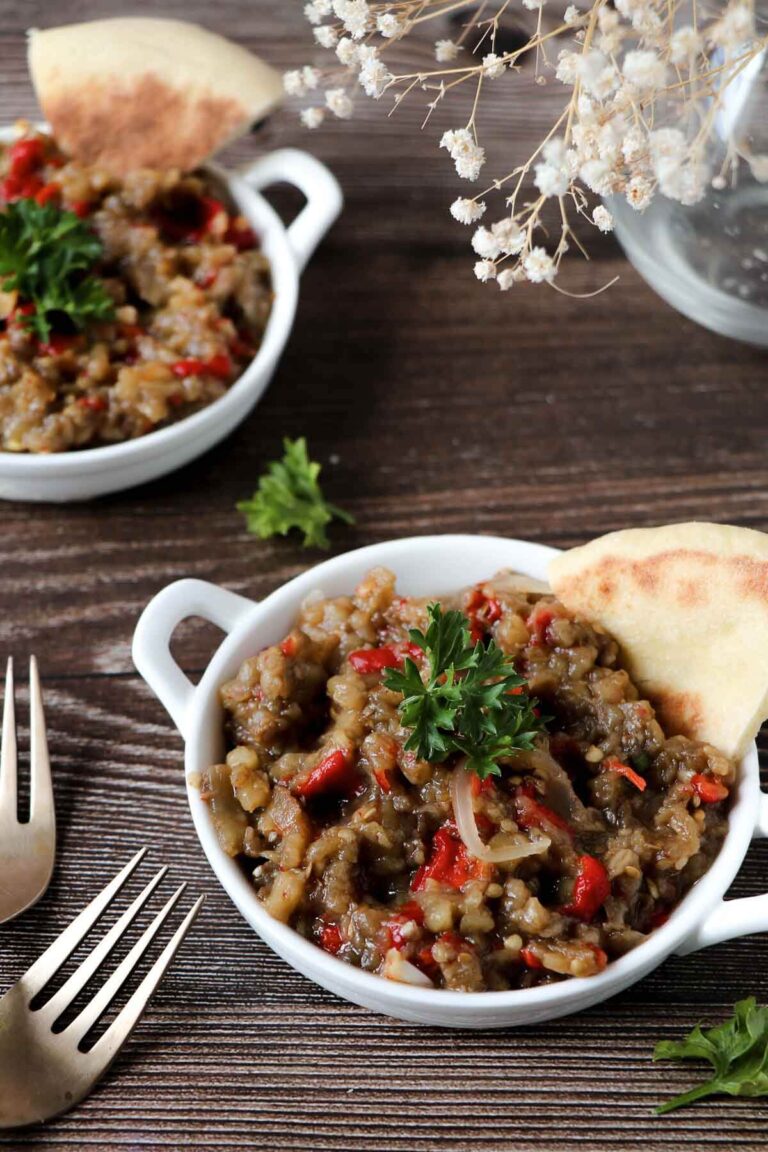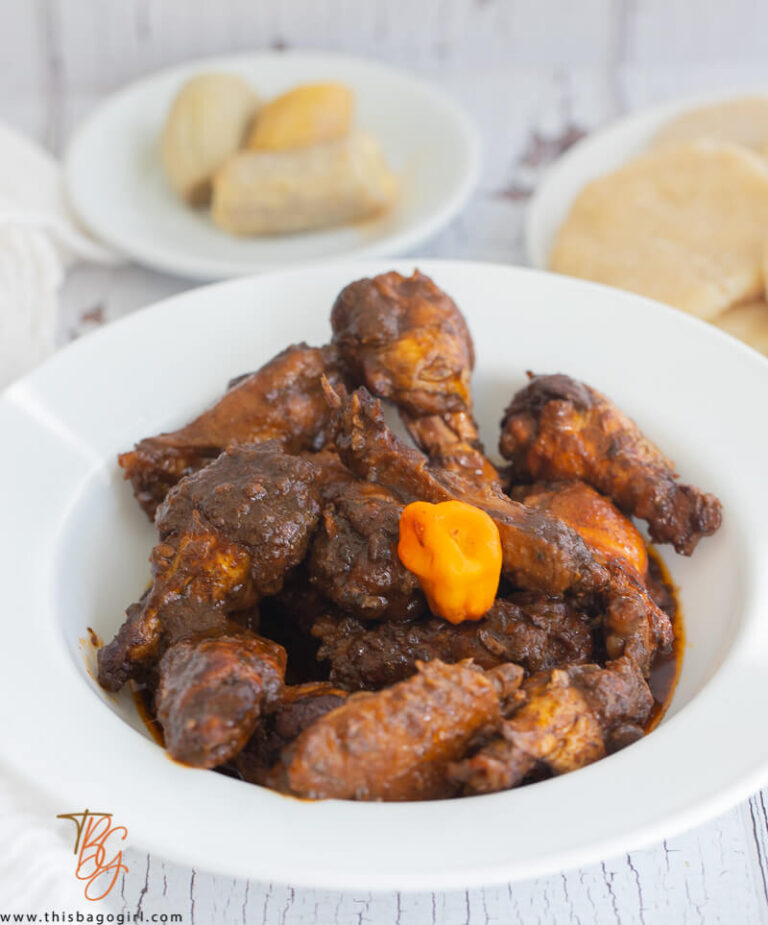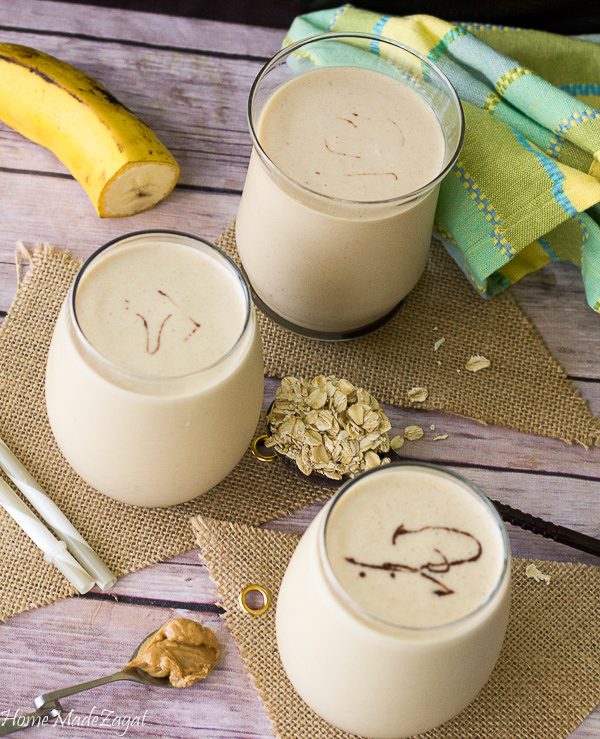Trinidad Mango Chutney: The Perfect Balance of Heat and Sweetness
If you love bold Caribbean flavors, this Trinidad Mango Chutney recipe is a must-try! It’s a perfect balance of sweetness, tang, and spice, making it the ultimate condiment for doubles, pholourie, and fried fish.
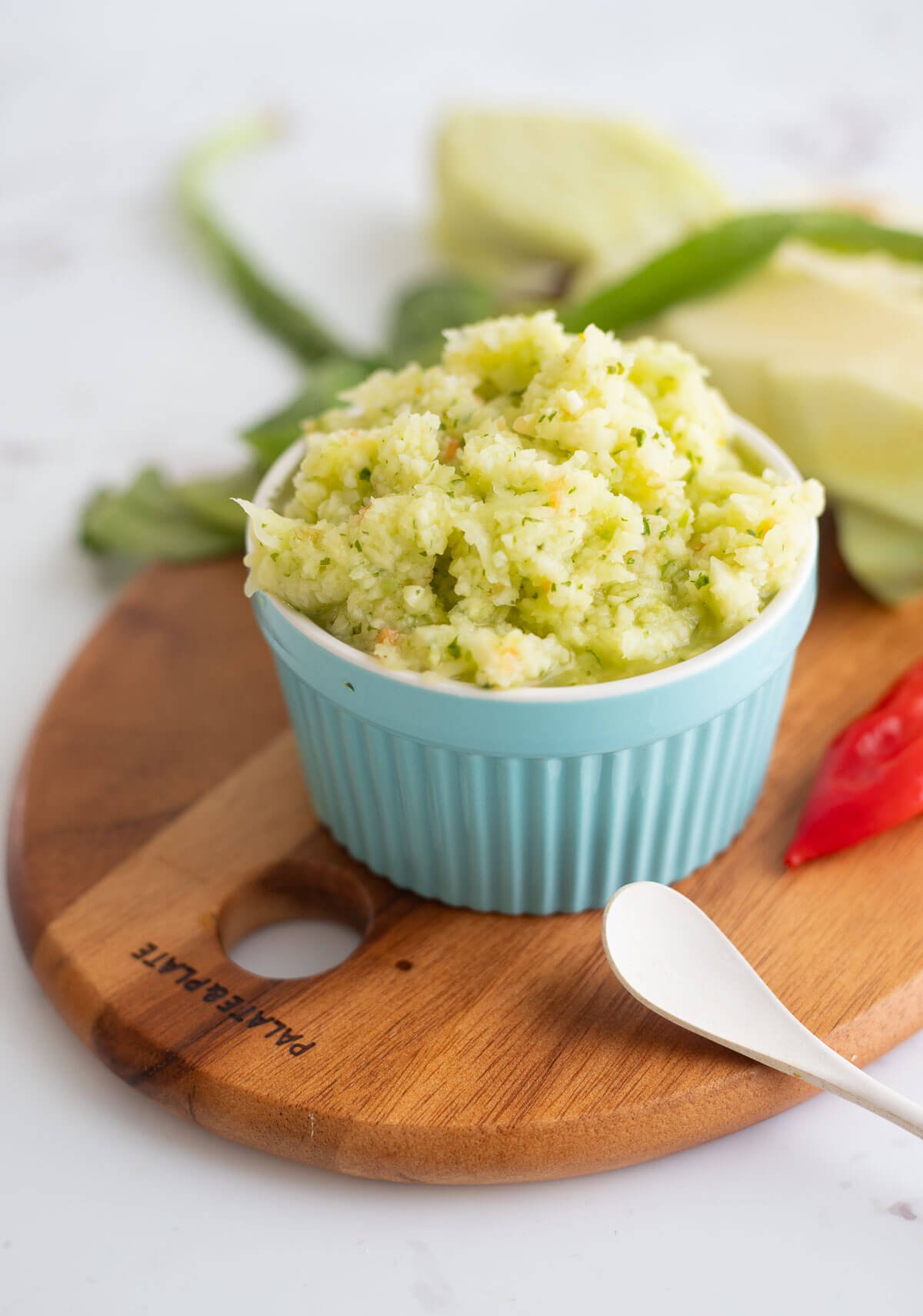
In this post, I’ll walk you through everything you need to know about making the best mango chutney, from the type of mangoes to the perfect combination of spices. You’ll also get tips on storage, substitutions, and creative ways to use this versatile chutney. Whether you’re a chutney lover or trying it for the first time, you’re in for a flavorful treat!
Mango chutney is one of those condiments that instantly elevates a dish. Whether you’re dipping hot, crispy pholourie into it or drizzling it over a plate of doubles, there’s no denying that Trinidadians know how to make chutney that packs a punch.
In Trini cuisine, chutney isn’t just a side dish, it’s a way to balance a meal. The combination of mangoes’ sweetness, hot pepper’s heat, and the tanginess of vinegar or lime juice creates a harmony of flavors that’s hard to resist. This chutney is flavorful, spicy, and perfect for adding a little Caribbean sunshine to any dish.
But mango chutney isn’t the only chutney we love in Trinidad! Tamarind chutney is another favorite, made from tangy tamarind pulp and often paired with street food classics like aloo pies and doubles. (You can check out my tamarind chutney recipe if you’re in the mood for something different but equally delicious!)
What is mango chutney?
Mango chutney is a sweet, tangy, and at times spicy Caribbean condiment made primarily from mangoes, sugar, and spices. It’s a must-have accompaniment for street food, adding a bold burst of flavor to dishes like doubles, pholourie, and bake and shark.
Depending on who makes it, the spice level can range from mild to fiery, thanks to the Scotch bonnet or bird’s eye peppers often added for heat.
The beauty of mango chutney lies in its versatility—it’s not just for street food! You can use it as a dip, a marinade, or even a topping for grilled meats and seafood. If you’re new to it, get ready to fall in love with one of Trinidad’s most iconic condiments.
How to make Trinidad mango chutney
Key ingredients & their uses
The magic of mango chutney comes from a handful of simple but essential ingredients. Each one is crucial in balancing the flavors, making this chutney the perfect mix of sweet, spicy, and tangy.
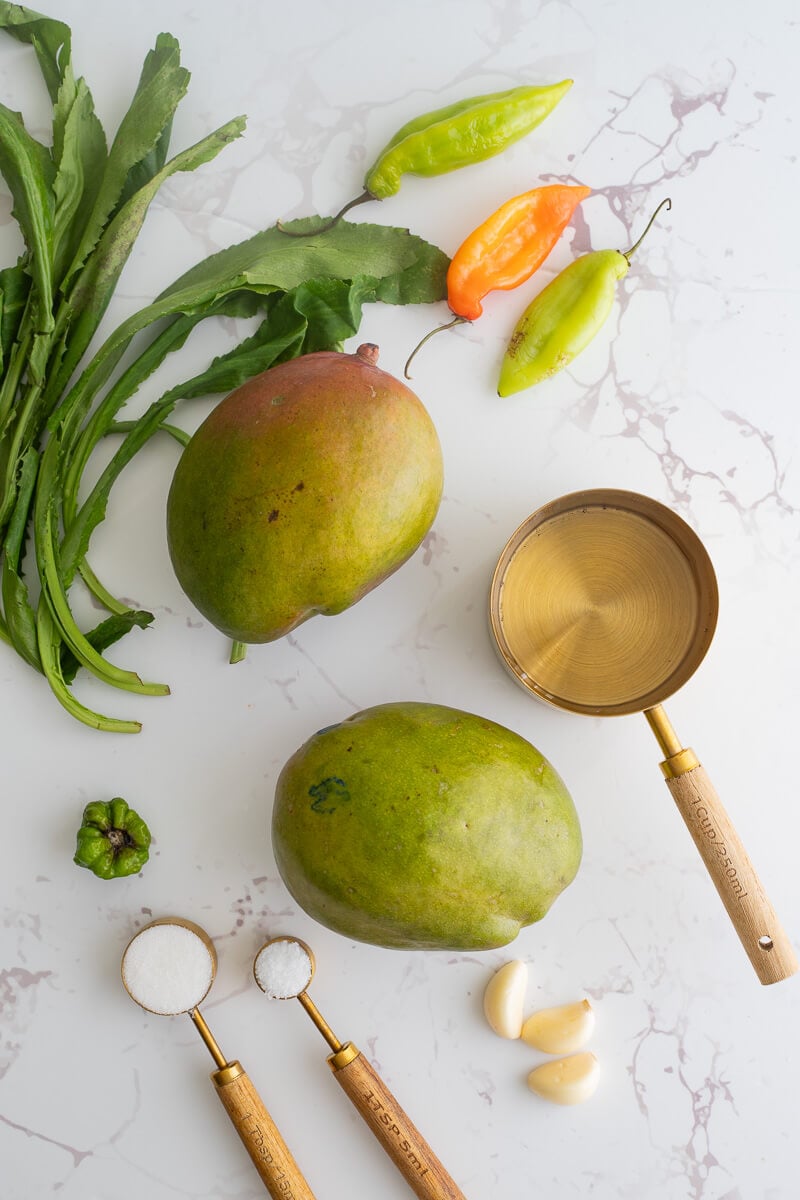
- Mangoes: Half-ripe mangoes are ideal for balance, but green (not the young ones) mangoes work well too for a more tangy chutney. Fully ripe mangoes will give you a sweeter finish.
- Peppers (Scotch Bonnet & Pimento): Scotch bonnet brings the heat, while pimento peppers add flavor without overwhelming spice. Many Trinis use a combo of both for the perfect balance.
- Garlic & chadon beni: These aromatics add depth and that unmistakable Trini flavor. Cilantro is a suitable substitute if shadon beni isn’t available.
- Sugar: Sweetens and balances out the acidity and heat. Adjust based on mango ripeness. Honey or coconut sugar can be used instead.
- Liquid (Vinegar, Lime Juice, or Water): Helps everything come together. Vinegar or lime juice gives it that tang and helps with preservation. Use water for a milder, less acidic chutney.
Instructions (Step-by-Step)
Making mango chutney is simple, and you can prepare it in just a few minutes. I’ll guide you through the grater method, food processor method, and the boiling method. You choose the one you like the best. But for me, the food processor is always the winner.
Method 1: Grated mango (Traditional Way)
- Prepare the mango: Wash and peel the mangoes. Using a box grater, grate the mango flesh into fine shreds.
- Blend the ingredients in a bowl: combine the grated mango, finely minced garlic, chopped chadon beni (or cilantro), and finely chopped Scotch bonnet pepper. Add vinegar or lime juice, sugar, and salt, then stir everything together until well combined.
- Adjust the flavor: taste and adjust seasoning if needed—more sugar for sweetness, more vinegar for tang, or more pepper for heat. If the chutney is too thick, add a little water to loosen it up.
Method 2: Food processor (Quick Method)
If you prefer a faster approach, you can skip grating and simply use a food processor. I actually prefer the consistency I get with the processor.
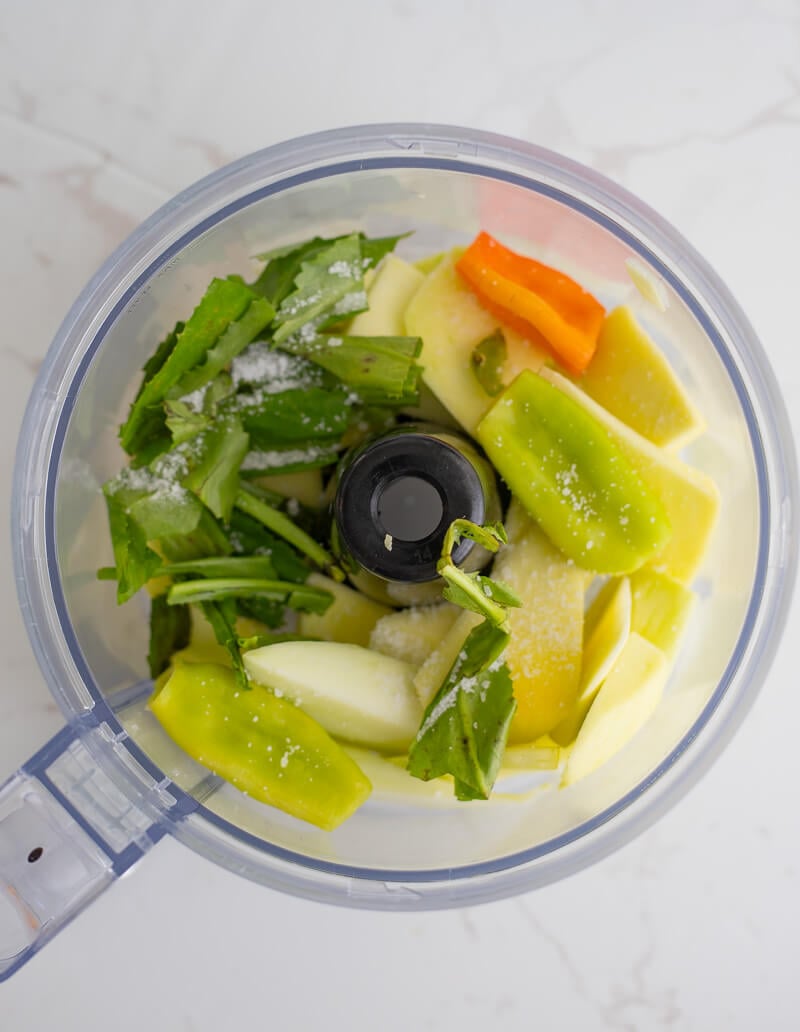
- Remove the mango flesh from the seed and add it directly to the food processor.
- Add all other ingredients (garlic, chadon beni, pepper, vinegar/lime juice/water, sugar, salt).
- Pulse until you reach your desired consistency—smooth or slightly chunky.
- Taste and adjust seasoning as needed.
Tip: If you want a smoother chutney, blend for longer. For a chunkier texture, pulse just a few times.
Method 3: Alternative boiling method
For a cooked version of this chutney. Note, I prefer the mangoes to be a little riper for this version.
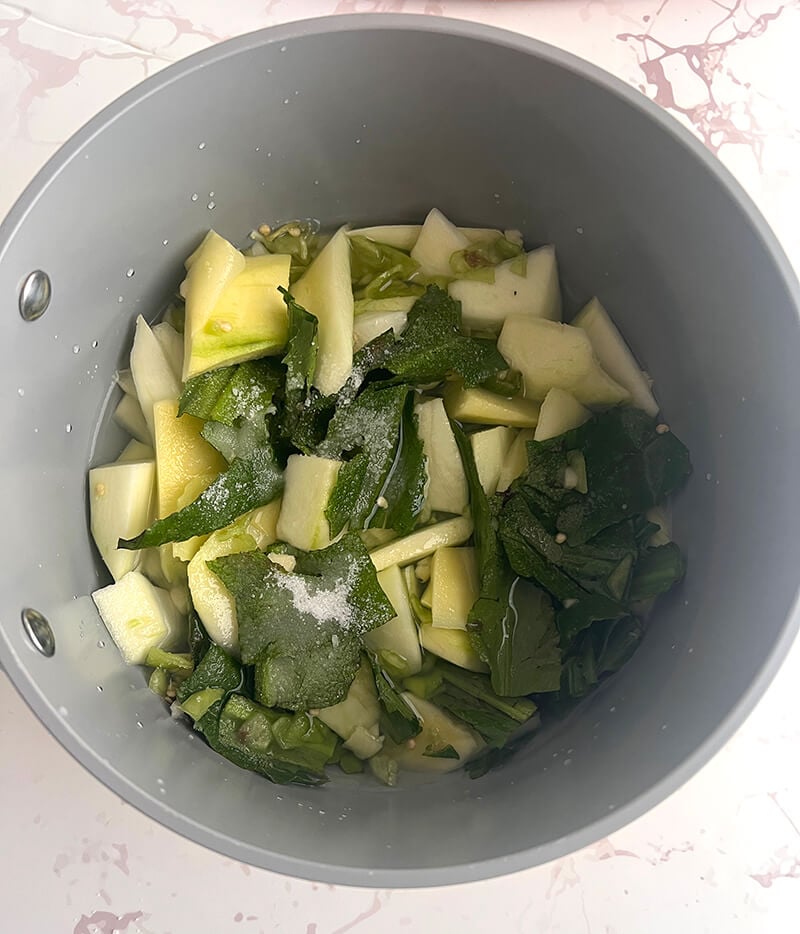
- Dice the mango instead of grating it.
- Add all ingredients (mango, garlic, pepper, vinegar/water, sugar, salt) to a pot.
- Bring to a simmer and let cook until the mango softens and breaks down (about 10–15 minutes).
- Mash until the desired consistency is reached.
This method results in a thicker, more jam-like chutney and is great if you want a longer shelf life.
Storage Tips
Once you’ve made your Trinidad mango chutney, you’ll want to store it properly to keep it fresh and flavorful. Here’s how:
Refrigeration (Best for Fresh Flavor)
- Store the chutney in a clean, airtight glass jar or container.
- Keep it in the refrigerator for up to 2 weeks. Though I have had it for longer, I always inspect for spoilage before use. Also, make sure to use clean utensils when taking out.
- If you use vinegar or lime juice, your chutney will preserve well, but always check for any signs of spoilage before using.
Tip: A little extra vinegar can help extend the shelf life.
Freezing (For Longer Storage)
- If you want to store it for longer than 2 weeks, you can freeze it.
- Pour the chutney into small freezer-safe containers or ice cube trays for easy portioning. I try to not add a lot of the liquid that the mango springs.
- When ready to use, thaw a portion in the refrigerator overnight or at room temperature.
Tip: If the texture changes slightly after thawing, just give it a quick stir or blend to refresh it.
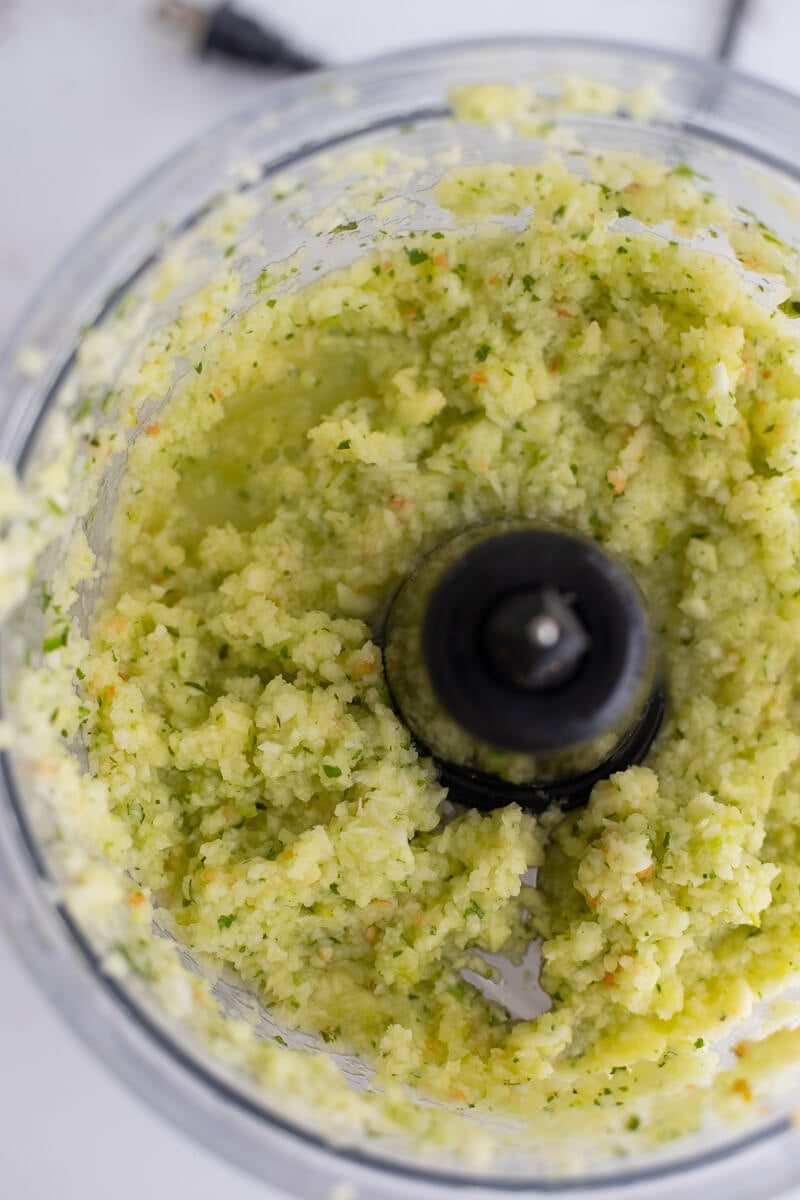
Shelf-Stable Option (If Cooked)
- If you use the boiled method, you can store the chutney in sterilized jars and keep it in a cool, dark place for up to a month.
- Once opened, refrigerate and use within 2 weeks.
Pairing suggestions
Trinidad mango chutney is a versatile condiment that can take any dish to the next level with its sweet, tangy, and spicy kick. Whether you’re drizzling, dipping, or spreading, here are some of the best ways to enjoy it:
Classic Trini Street Foods:
- Pholourie – This is one of the most popular pairings. Hot, fluffy pholourie dunked in mango chutney is an unbeatable combo!
- Doubles – Add a spoonful to your doubles for an extra burst of flavor.
- Aloo Pies & Saheena – A little chutney on the side makes these fried favorites even better.
Savory Snacks & Fried Foods
- Fried Fish – A drizzle of chutney over crispy fried fish adds the perfect balance of sweetness and heat.
- Bake and shark – Many vendors serve mango chutney as a topping option.
Creative Ways to Use It
- As a condiment – I love it with my pelau or split peas and rice cookup.
- Sandwich spread – Add some to your cheese sandwiches or wraps for a fruity, spicy kick.
- Cheese boards – Serve with crackers and cheese for a unique twist.
More condiments
Looking for more Trini condiments? Try my pineapple chutney next, it’s another must-have for any Caribbean kitchen! Also try:
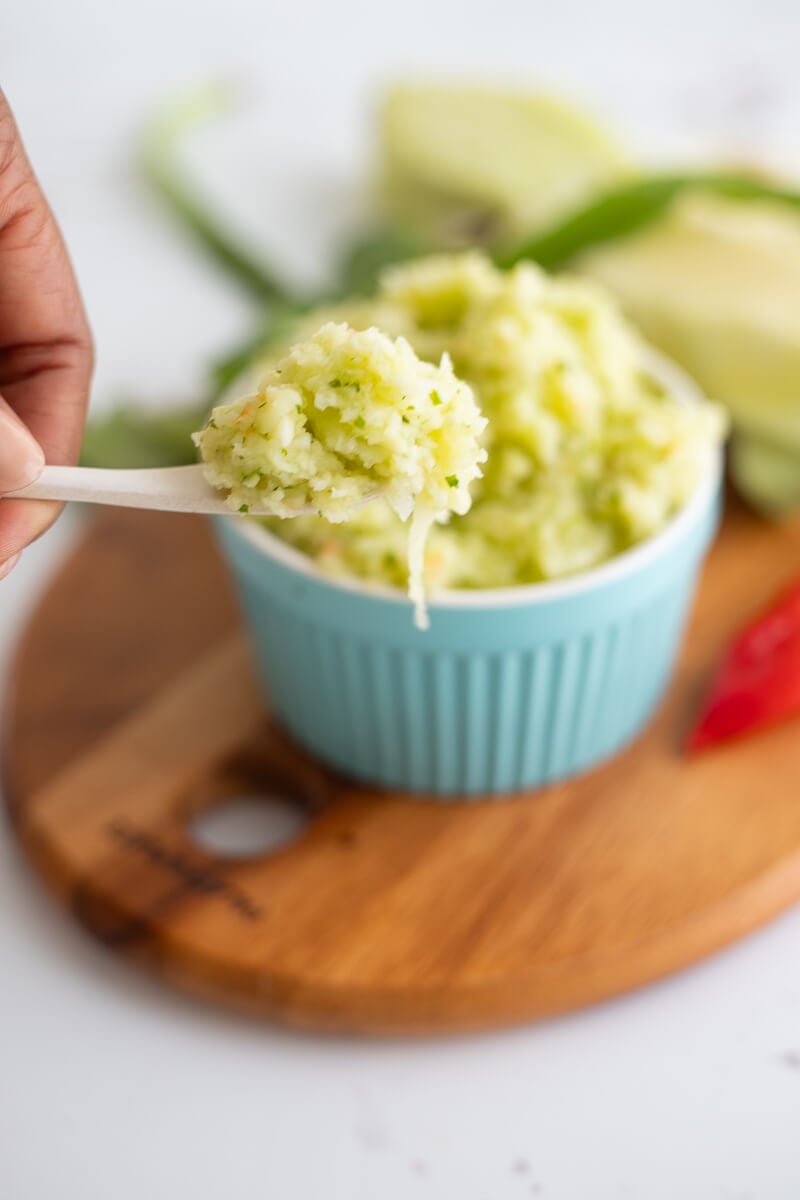
Frequently Asked Questions
Yes! Green mangoes will result in a tangier chutney with less sweetness. If using green mangoes, you may want to add a bit more sugar to balance the flavors.
he spice level is entirely up to you! Traditional Trini mango chutney has some heat from Scotch bonnet peppers, but you can adjust by using fewer peppers or swapping them for milder ones like pimento peppers.
Yes! If you don’t have a blender, you can grate the mango and mix the ingredients by hand. For a smoother consistency, you can also mash the chutney with a fork or use a mortar and pestle.
Refrigerated: About 2 weeks in an airtight container. Frozen: Up to 3 months in a freezer-safe container. Cooked & Sterilized in Jars: Up to a month in a cool, dark place (refrigerate after opening).
Yes! You can omit the sugar if using very ripe mangoes or replace it with honey, coconut sugar, or a sugar substitute.
Definitely! Some people add pineapple or even tamarind for extra depth. Just keep in mind that it will alter the taste slightly.
Now that you know how to make Trinidad mango chutney, it’s time to try it for yourself! Whether you prefer the grated mango method or the quick food processor version, this chutney is guaranteed to add a bold Caribbean kick to your meals.
I’d love to hear how you enjoy your chutney! Did you make it spicy? What did you pair it with? Drop a comment below and let me know. And if you love this recipe, don’t forget to rate it and share it with your friends.
Recipe

Trinidad Mango Chutney
Ingredients
Method
- Wash and peel mangoes.
- On the larger side, grate the flesh off the mangos.
- Take the grated mango and add to a large bowl. Finely mince the garlic, chado beni, and peppers
- Add it to the bowl with the grated mango.
- Add in the sugar, salt, and black pepper.
- Add liquid of choice, a little at a time to get the consistency you prefer.
- Combine well.
- Adjust seasoning to suit.
- Cut off the meat of the mango.
- Take the chunks and add them to the processor.
- Roughly chop the peppers, chadon beni, and add them to the base.
- Add the sugar and pepper.
- Add 1/4 cup water and pulse the processor about 2 times.
- Check consistency and taste.
- Adjust as needed.
- Wash and peel mangoes.
- Cut off flesh off the seed and cut into chunks.
- Dump ingredients into a pan.
- On medium heat, simmer until the mango is tender (keep an eye out for liquid levels).
- When the mango is tender, take a spatula and crush it up a bit.
- Adjust for taste.
